As Debbie and I were riding in our golf cart to our neighborhood mail kiosk yesterday, she exclaimed “snake!” as we drove over the low water crossing. I hit the brakes and backed up about twenty feet to where Pecan Creek flowed under the street we were on. Sure enough, a small snake was floating in the slow moving water. Little did it know that it was about to go for a wild ride.

I initially ID’d the snake from a distance as a harmless plain-bellied water snake (Nerodia erythrogaster), aka PBWS, a fairly common species found in and around the creek. We watched as it floated tail-first into the culvert…
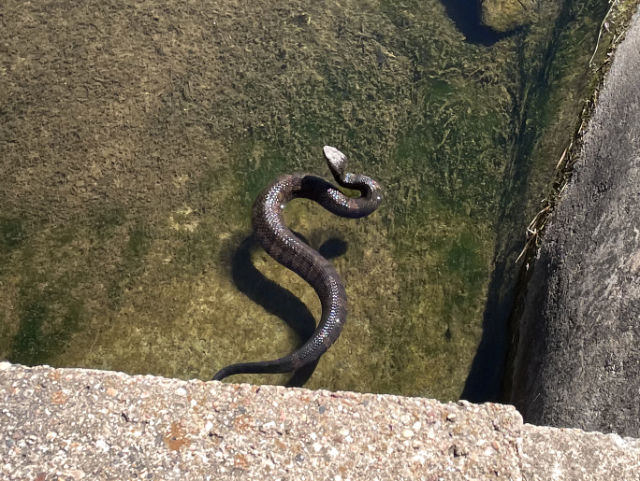
…and then down the steep exit on the other side of the street…
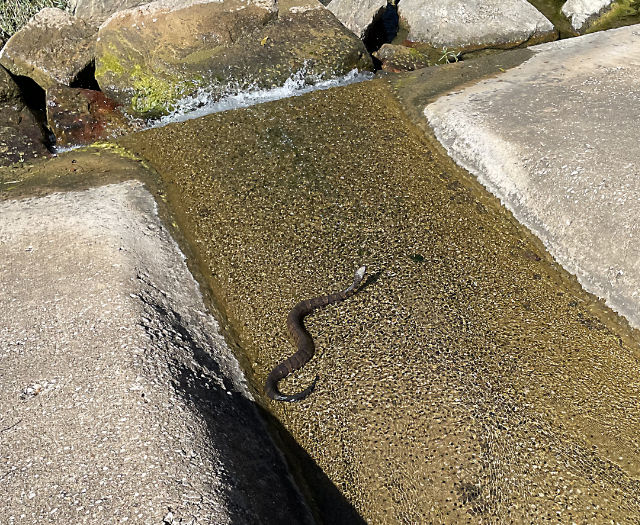
…where it banged into the big rock at the base of the culvert.
It appeared slightly stunned at that point, and I scrambled down the concrete apron to get a closer look as it came to its senses and began to explore the rocks where it came to an ignominious halt.
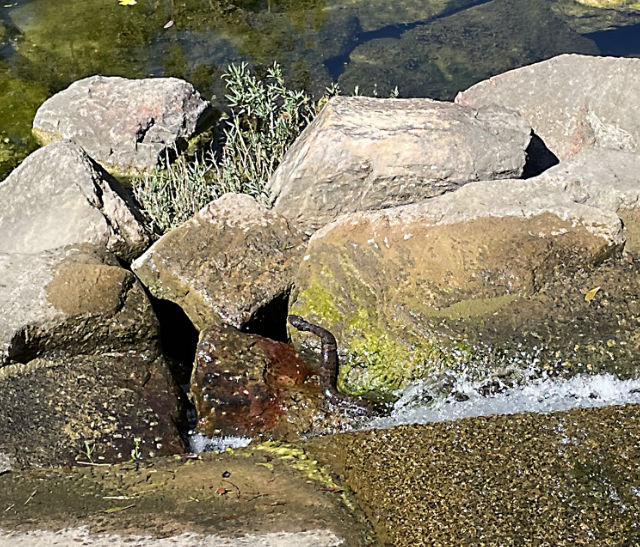
Debbie captured a short video of this exploration:
I was now close enough to the small snake — it was perhaps a bit longer than two feet — to recognize that it was not a PBWS after all. That’s my shadow in the photo below as I took pictures with my phone.
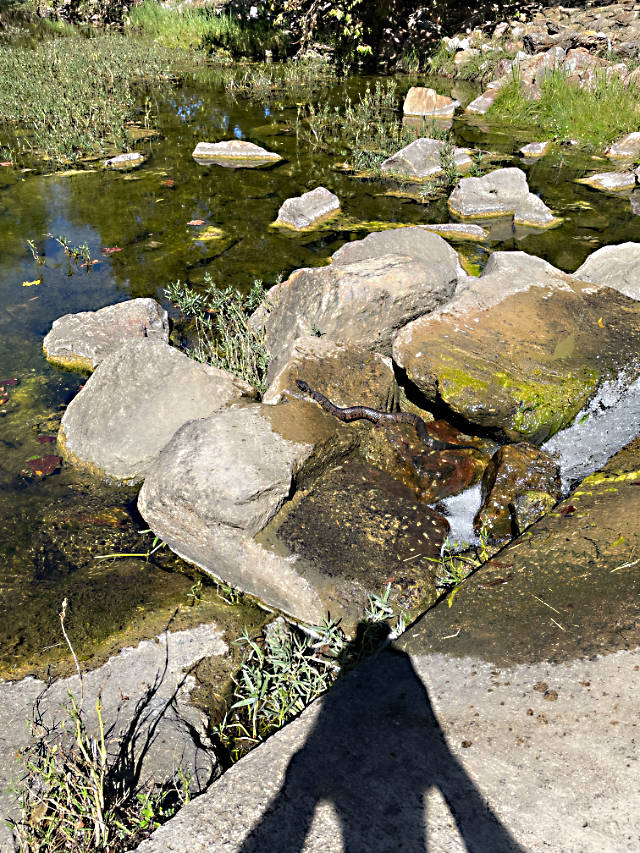
It was plain to me that this was a venomous northern cottonmouth (Agkistrodon piscivorus), and a juvenile at that.
The main identifiers for young cottonmouths (aka water moccasins) are clearly shown in the following photos. The black horizontal stripe across the eyes is present in all cottonmouths, unless obscured by mud. Also, the snakes’ eyes are “hooded,” meaning that if you look at the back of the head from above, you can’t see them, which is not the case for harmless water snakes. Also, the rather colorful jagged or “pixelated” banding on the body is a feature of a young cottonmouth; they’ll eventually lose that coloration as they age.

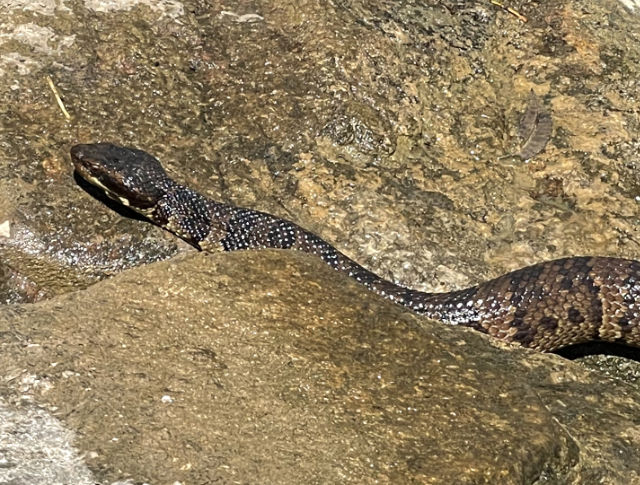
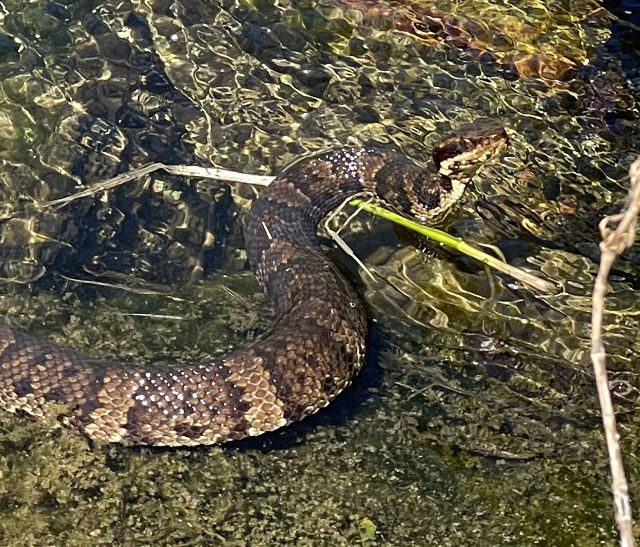
Below is a better look at the hooded eyes of the snake, but note also how the snake’s body abruptly narrows into its tail. You’ll see this in other watersnakes but it’s not as pronounced.
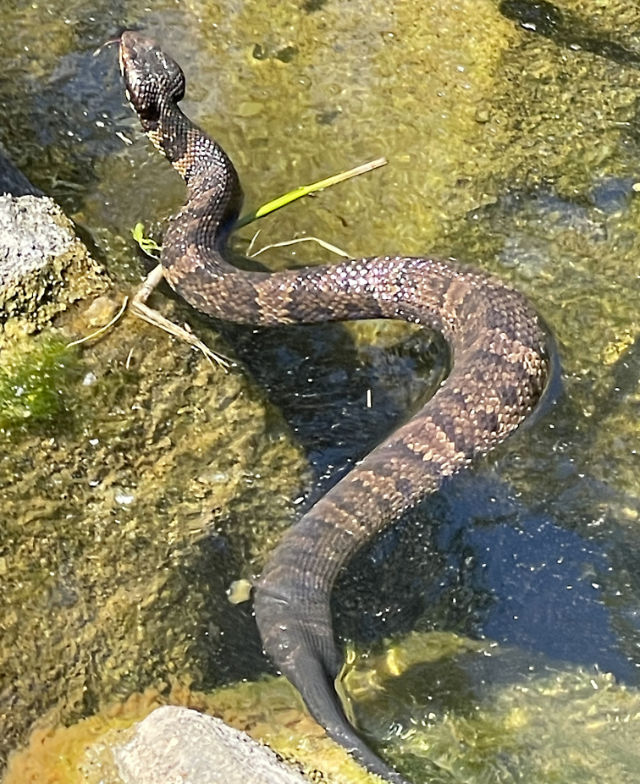
This is a great photo for discerning the main physical characteristics of a juvenile cottonmouth. You can clearly see the horizontal banding over the eyes.
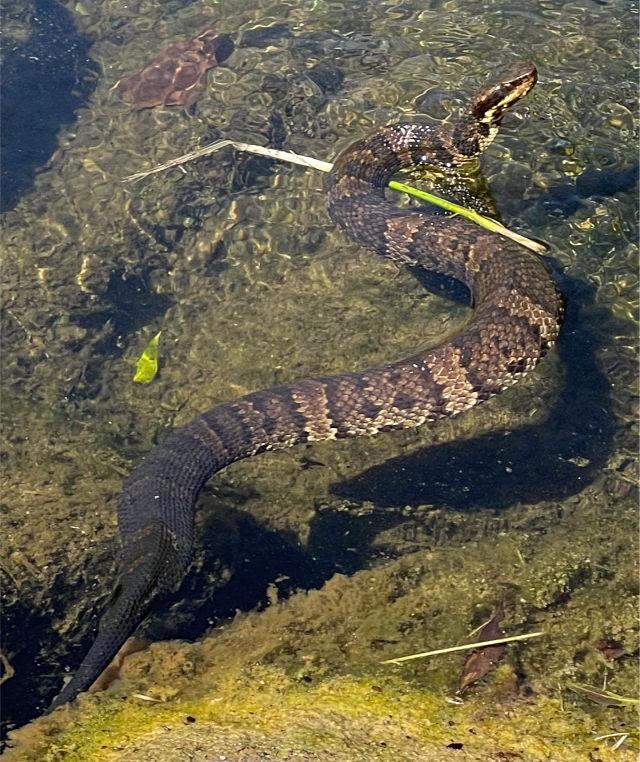
The young snake eventually tired of the attention of the paparazzi, and wriggled downstream to disappear into the rocky bank.
Some people claim that you can distinguish between a harmless water snake and a cottonmouth by whether they swim with their bodies completely on top of the water, or with their bodies submerged and just their heads sticking up. This is not a reliable identifier.
The best-known characteristic of a cottonmouth was never on display during this entire encounter, and that’s the wide-open mouth (it’s called “gaping”) that shows the white lining giving the snake its name. Gaping is a defensive posture, and this individual never felt the need to go into defense mode. Cottonmouths have a reputation as being ill-tempered and aggressive, but I’ve had many close encounters with them over the past few years, and I’ve not experienced anything remotely like that.
Now, I wouldn’t call them cuddly, or want them in my back yard or around pets and children (of which we have none along this section of the creek), but I’m also not going out of my way to exterminate them.
At the same time, I’m also not going to judge those who take a different view. It’s true that they were here long before we were, and they have a role to play in the ecology, but we’ve been given mastery over this creation we’re blessed with; I simply hope we exercise that mastery with wisdom and grace.
Discover more from The Fire Ant Gazette
Subscribe to get the latest posts sent to your email.

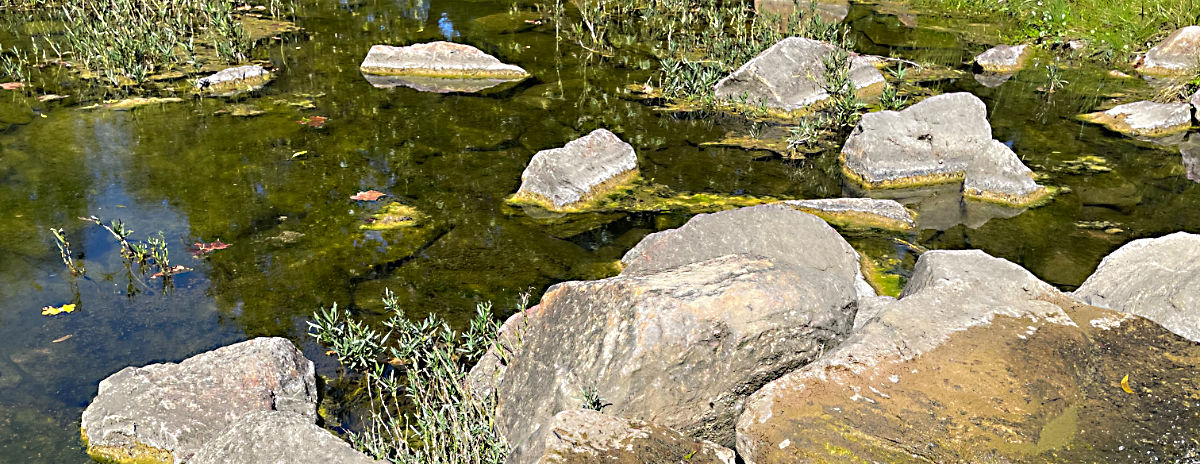
We miss your comments. San Antonio doesn’t have all of this wildlife. Just City Life.
Your old Neighbors
Sandy&Gary Howards